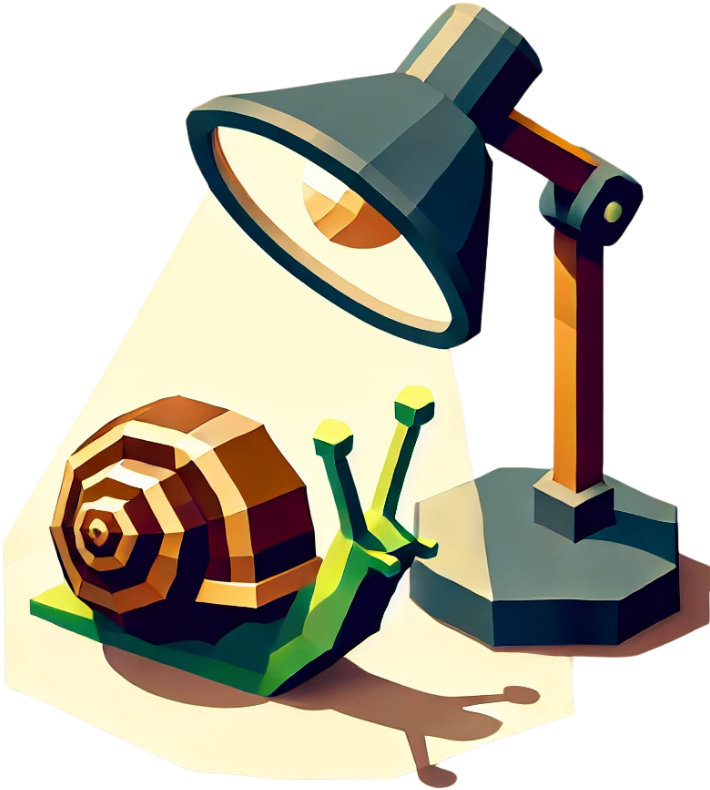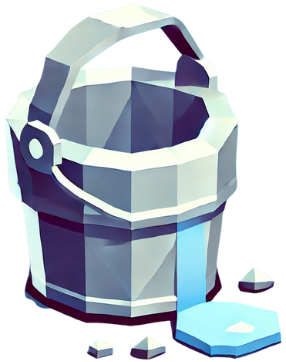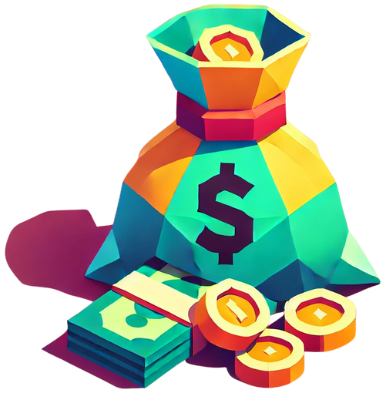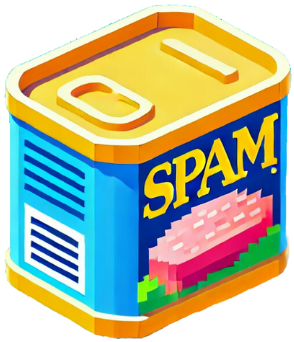I woke up this morning, approaching the end of my travels in Thailand, and felt the creeping dread of returning home. The kind of dread that makes staying in bed seem like the only logical choice. Because waiting for me on the other side of my flight is the need to reconfigure my life.
I’m talking full-blown, existential-realignment levels of reconfiguration.
Where I live, what I do, how I make money—none of it feels solid. All of it demands decisions and, to make matters worse, some of those decisions are going to raise eyebrows. But I'm happy to report that I've puzzled through the worry of it all.
I completely eliminated my existential anxiety in less than an hour.
All it took was a willingness to sit down, clarify my priorities, and switch up my identity a little. So if you're in a similar spot, know that there's a simple but powerful exercise ahead that might help you get unstuck just as quickly as I did.
But first, some context.
The PhD That Almost Broke Me
You may have noticed from the byline that I've got a doctorate.
If you've ever considered doing one, I'd only recommend it if you want to study something you love until you hate it, or if you hate yourself.
(I kid. Sort of.)
Anyway, throughout my PhD, I built mammoth amounts of discipline. I published multiple papers in well-regarded journals, ticking most of the boxes for a tenure-track position at a university. The process trained my mind and problem-solving skills in ways I'll carry forward for the rest of my life, which I'm eternally grateful for.
But the thing that defined my PhD the most?
The suffocating stress of uncertainty.
Y'all Got Any More of That Data?
In research, data is everything. It's like currency.
You can build an entire career in academia if you somehow have access to the participants, machinery, or rare subterranean sea snail that can get you on an authorship team.
To a researcher, quality data is worth more than gold itself.
At the start of my PhD, I fell under the impression I needed three solid datasets to graduate. As my candidature ticked along, I wound up with only two and no clear path to a third. I lived every day with that knowledge and soon began using my fear as fuel.
If I wasn’t at my computer, I was calculating how far behind I was. If I wasn’t working, I was panicking about not working. I’d forget to eat, to go to the bathroom, to breathe. And when I did finally wrap up for the day?
I drank. Every night.
It was the only way I knew how to wind down my nervous system, otherwise I couldn't relax. Eventually, I became so used to this way of living, I didn’t even realize how much I was suffering—all because I couldn’t tolerate the murky path to the finish line.1
The Detour That Sent Me in Circles
I did finish in the end. But by that point, I was completely burned out. I wanted to flee the ivory tower and never look back.
So, I split my time between freelancing and research, trying to figure out what the hell I was doing. I wanted my own business—something sustainable, something where I was in control. I pursued it with everything I had.
And I failed.
I botched an opportunity with a major client, overestimated my ability to sustain myself without them, and watched my finances drain like a bucket with a slow leak. In the meantime, the cost of living in Australia skyrocketed.
So, with my leaky bucket in hand, I started talking myself back into academia.
The workload was crazy, sure. But my boss was great, and at least it offered some stability. Maybe this was what I was meant to do after all?
For a while, I almost believed it. Then, at the start of 2024, everything changed.
The Man Who Made Me Question Everything
I met someone.
Someone with cognitive problems, no desire for stability, and a dream of living in a van. The total opposite of me—someone who had spent years valuing intellectual pursuits, security, and financial safety above all else.
He was unhinged. And I was in love.
It turned out he was a mirror.
When the relationship ended, it left me with a question I couldn’t unsee: Was I actually happy? Or had I just convinced myself I should be?
The moment I acknowledged the answer, my whole world dried up. The safety I had talked myself into suddenly felt suffocating.
I needed to leave—immediately.
So, I took two months off, flew to Thailand, and focused on my freelancing. And that's when something incredible happened.
I felt joy again.
I started working on this project, which I’d shelved for over a year. I put together a workshop on compassion, shared it with a room full of personal-growth enthusiasts, and walked away with feedback that confirmed I was on the right track.
Not long after that, I was plotting my escape again—I would quit my job, move somewhere cheap, and finally give my creative work the space it deserved.
I was making progress. But fear was still knocking at the door.
Guess Who's Back? It's Fear of Uncertainty
The same fear of uncertainty that had plagued me through my PhD reemerged in a different form.
Upon considering these drastic moves, I’d begun waking up in the morning feeling nauseous. My psyche was in crisis mode, unsure what to make of my new priorities, because they were threatening to eject me from my safe, well-defined identity as a stable professional.
If I’m not a researcher, then who am I? And if I walk away from the stability I worked so hard to build, what does that actually look like?
These turned out to be important questions.
I needed some sense of what lay ahead—even if the answer wasn’t pretty—so I could decide whether I was willing to accept it. Because floating between my old identity and the looming possibility of becoming a full-time, barefoot creative was giving me psychic whiplash and making me queasy.
If I wanted to stop waking up feeling like I was about to vomit, I needed to get clear on who I was becoming.
The Solution: Clarifying My Priorities and Redefining My Identity
So, I spent an evening doing a five-step exercise. I made it up on the spot, but somehow it solved everything.
(This is where you start taking notes.)
Step 1: Sort Your Life Goals
I started by listing all my major life goals.
I’m not talking about a list of travel destinations. More like all the different lifestyles I want to experience before I die.
These are…
Being in a loving, supportive relationship
Achieving financial stability
Having freedom and mental space to create
Running my own financially successful business
Simple enough? Onto Step 2.
Step 2: Cut the Proxies
Some goals aren’t real goals. They’re just middlemen.
So, I tested each priority with one simple question: If I had this, what would I do then? If the answer wasn’t "more of that thing," then it was just a means to an end.
Financial stability and business success? It turned out both were just tools to buy time and space for what I really wanted: to create.
Step 3: Control What You Can
Some things are out of my hands, like when (or if) the right partner shows up. Because I'm done with dating apps and tired of scanning the supermarket aisles for my soulmate.
But creating? That’s entirely on me.
So, I decided to ditch the distractions and focus on what I could control.
I’d figured out with perfect clarity what my highest priority was—the space to do my creative work—and this made perfect sense to me.
My happiest moments have been the ones where I’m consumed by creation—glued to my laptop and forgetting to blink. That’s when reality glitches and I slip effortlessly into flow.
It’s been this way for as long as I can remember.
As a kid, I spent hours hunched over at the computer, crafting stories that read like fever dreams. And even during my PhD, I would stay up till 2 AM, slightly delirious, hammering away at my novels until my eyes wouldn’t stay open.
It was obvious where my passions really lied. How did I ever stray so far from what truly made me happy?
Step 4: Own the Identity
But figuring out my priorities wasn't the end of the story.
If I wanted to fully commit to writing, I had to own it as an identity. Not as a side project, not as a thing I fit in around “real” work, but as my highest priority.
That meant letting go of my old identity. The "professional" that thought certainty and stability was the most important thing. Because it wasn't.
So, I applied the next technique in my self-help arsenal and the fourth step in my exercise—I found an archetypal identity that aligned with my highest priority.
This is important because there needs to be a match between your highest goals and how you view yourself, otherwise you won’t make progress and might go crazy trying.2
Mine turned out to be the starving artist.
Step 5: Really, Really Own it
But could I really accept this identity—embrace its inevitable shitty parts?
This was the final step in my analysis.
Could I handle sleeping in a worn-down van, living off tinned tuna, and possibly showering at a 24-hour gym? Would I do these things if it meant I could spend my days doing what I love?
Could I make peace with pouring my energy into my work, having no one understand it, struggling to monetize it, and risking everything if it meant I could simply keep creating?
Hell yeah, I could.
I once spent ten days freezing my ass off in a tent in the dead of winter, doing nothing but eating boiled fruit and meditating.
I know I can live cheaply or rough it in the woods if need be. So why did I never consider making these sacrifices?
How Did I Get So Confused?
By the time I'd finished the exercise, my mind was clear. I knew where I was headed, and I knew who I was becoming. The anxiety in my stomach melted away and, to this day, it hasn’t come back.
But how the hell did I get this confused in the first place?
It turns out, it was two things.
1. Conflicting Beliefs
Any time I feel anxious, it’s usually because there’s a knot in my thinking—some contradiction or false belief I haven’t untangled. This time, it was because I was holding onto two conflicting beliefs:
Live in flow, doing what you love.
Maintain an abundance mindset.
I was certain I could have both—it had to be possible to do what I love and have the financial abundance to support it. But I was thinking about abundance too narrowly. I was equating it with money and security without questioning whether those things were actually what I needed.
When I looked deeper, I saw that creative freedom, not financial stability, was what truly mattered to me. I’d spent years thinking a steady income would allow me to pursue my creative work, but what if it had been an obstacle instead?
I don’t need a cushy bank account to be happy.
In fact, the thought of ditching all my financial obligations and living out of a van with an old laptop and a Wi-Fi signal sounds freeing. If I strip away the fear, I can see that stability has never actually been my goal—freedom has.
And sure, maybe financial abundance will come. But I’ve studied the advice of successful creatives enough to know that authentic expression must come first—free from ulterior motives.
2. Family Conditioning
To close off this case of mistaken identity, I had to ask: Where did this fear of uncertainty come from in the first place?
Because when I really look at my life, I’m absurdly adaptable.
Drop me in an unfamiliar situation, and I’ll MacGyver my way through it. So why does the idea of financial instability send my nervous system into full-on DEFCON 1?
No prizes for the answer: It was my family.
Generations of financial hardship shaped my family’s story.
My father and grandfather knew poverty firsthand, and the echoes of that struggle were impossible to miss. Then came my parents’ divorce—a stretch of years defined by quiet uncertainty, absorbing the unspoken worry about where my mom and I would live once everything was divided.
That fear burrowed deep and became part of my conditioning. It shaped decisions I didn’t even realize I was making, but it was never mine to carry.3
Because deep down, I know I can do this.
That’s not to say everyone should take on my priorities. Some people truly need stability to thrive, and that’s completely fine. But for me? Stability has been the thing keeping me stuck.
Conclusion: Making Peace with Uncertainty
So, I’m surrendering.
If I end up sleeping in a van, so be it. If I have to live off instant coffee and tinned spam, fine. Because I’m no longer operating from the illusion that I need security to be happy.
The fear? It still comes and goes.
But instead of trying to quiet it with plans and backup plans, I’m just letting it exist. Because for the first time in a long time, I know exactly what I want, and I’m finally willing to give up everything else to have it.
I’ve spent years playing the character of “serious scientist,” and I committed to the bit. Those years shaped me, challenged me, and gifted me a pretty solid collection of skills.
But life is a game.
You can hit reset and have fun with a new character any time you want.
So, that’s what I’m doing.
Maybe something is holding you back too—a belief that no longer serves you, a definition of success that isn’t really yours, or a safety net that’s actually just keeping you stuck.
If that’s the case, ask yourself what’s the price of staying stuck? And what terrifying but exciting shift in identity would move you toward the life you truly want?
Thanks for reading. If you’re on your own path to realignment, I hope this post gives you the nudge you need. And if it did? Consider subscribing to Set Foot for more reflections on growth, creativity, and living life on your own terms.
In the end, it turned out I’d been treating my data like a Michelin-star chef overcomplicating a grilled cheese. The datasets I’d brushed off as too basic were more than enough to get the job done.
Clear, J. (2018). Atomic habits: An easy & proven way to build good habits & break bad ones. Avery.
Shoutout to Ann Moloney, the awesome Human Design coach who helped me figure this out.











